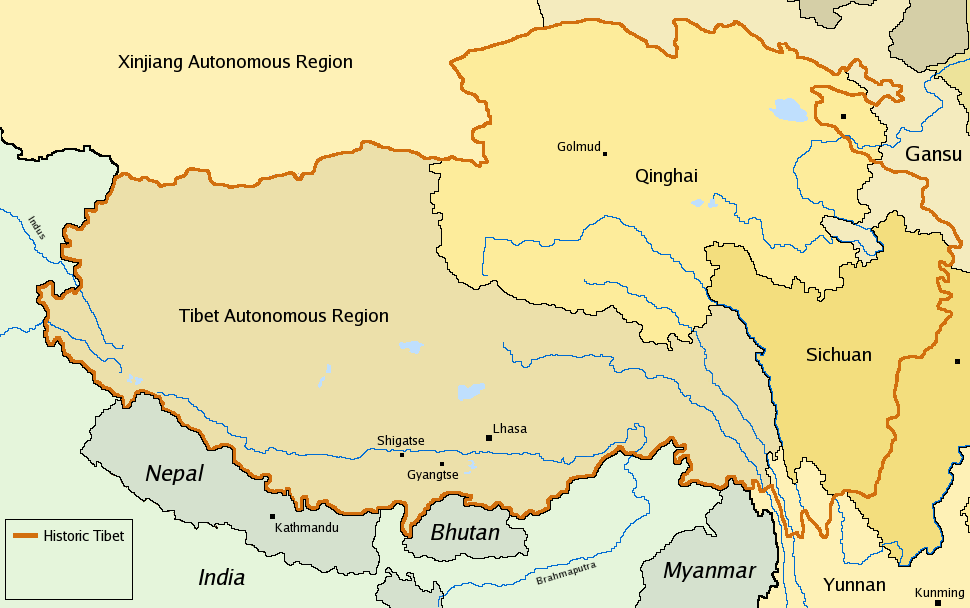Where is Tibet? Why should you help Tibet regain its freedom? What is Tibet like? What really happened when China invaded Tibet? Here is where you can find the answers to some of your questions. Arm yourself with the knowledge you need to be an intelligent freedom fighter!
Tibet lies at the center of Asia, with an area of 2.5 million square kilometers. Encircled by the Earth’s highest mountains, Tibet is a vast, arid plateau with an average altitude of 14,000 feet above sea level. The Tibetan plateau has unique and exceptional ecosystems. The headwaters of Asia’s major rivers originate on the Tibetan plateau, which supply 85% of the population of Asia with water—approximately 47% of the world’s population.

Tibet is comprised of the three provinces of Amdo, Kham, and U-Tsang. Amdo is now split by China into the provinces of Qinghai and part of Gansu. Kham is largely incorporated into the Chinese provinces of Sichuan, Gansu and Yunnan, and U-Tsang, together with western Kham, is today referred to by China as the Tibet Autonomous Region (TAR).
The TAR comprises less than half of historic Tibet and was created by China in 1965 for administrative reasons. It is important to note that when Chinese officials and publications use the term “Tibet” they are referring only to TAR.
Tibetans use the term Tibet to mean the three provinces described above, the area traditionally known as Tibet before the invasion in 1949-50.
Despite over 60 years of Chinese occupation of Tibet, the Tibetan people refuse to be conquered and subjugated by China. The present Chinese policy—a combination of demographic and economic manipulation and discrimination—aims to suppress the Tibetan issue by changing the very character and the identity of Tibet and its people.
Today, Tibetans are outnumbered by Chinese in their own homeland.
